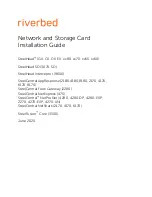
21065L EZ-KIT Lite C and assembly programs, the user can inspect the source files for the
EZ-KIT Lite audio demos.
3.3.4 DSP Programming of the AD1819 Indexed Control Registers
The monitor program provides a setup routine for the AD1819. Table 3-7 shows the registers used
by the DSP and their state after reset. The user can use the monitor buffers contained in the demo
programs or write their own code to use the AD1819 codec. The code must initialize these registers
when using the AD1819.
For example programs and further documentation on AD1819 programming with the ADSP-
21065L, you can visit our web site at
www.analog.com/dsp.
Table 3-7 DSP Programming of the AD1819 Indexed Control Registers
Address
Index Register Name
#define Label in 2106x program
State
0x06
Master Volume Mono
MASTER_VOLUME_MONO
0x8000
0x0E Microphone
Volume
MIC_VOLUME
0x8008
0x10
Line Volume
LINE_IN_VOLUME
0x8808
0x1C Record
Gain RECORD_GAIN
0x0F0F
0x20 General
Purpose
GENERAL_PURPOSE 0x8000
0x78
Sample Rate 0
SAMPLE_RATE_GENERATE_0
0xBB80
0x7A
Sample Rate 1
SAMPLE_RATE_GENERATE_1
0xBB80
3.3.5 EMAFE Programming
Communicating with the EMAFE is done through either of the SPORTs, or through indexed
addressing. To read or write memory on the EMAFE, the memory should be written to address
0x0100 0000. After writing the address, the data can be read from or written to address 0x0100
0001. Multiple reads, or writes, are executed without rewriting the address.
Because of the bus timings of the ADSP-21065L, an address hold cycle must be added to the bus
cycles of MS1 to communicate with the EMAFE.
This is done in the WAIT register of the ADSP-21065L and guarantees that the data remains valid
when the WR line goes high (invalid). If this is not done, the data and or address written to the
EMAFE may not be stored correctly.
As stated in the previous section,
JP3 must be connected to +3.3V
CC
if SPORT1 is
used on the EMAFE or the AD1819 will contend with the EMAFE’s operation.
32
www.BDTIC.com/ADI















































